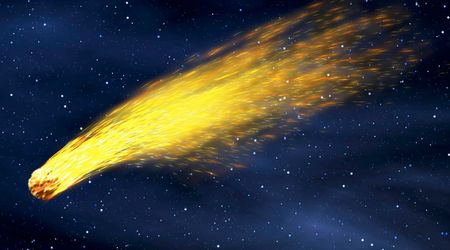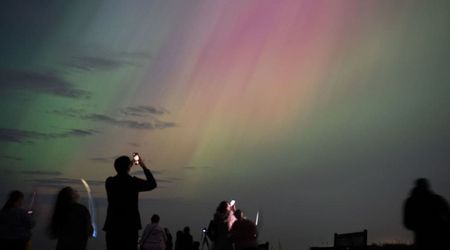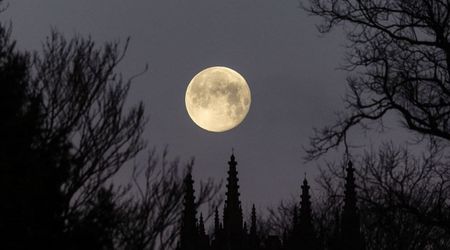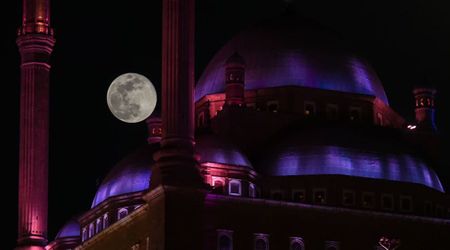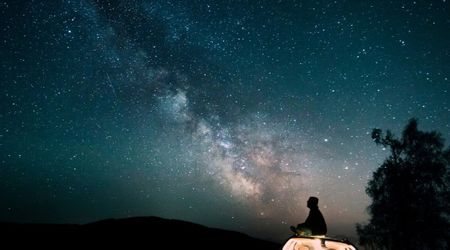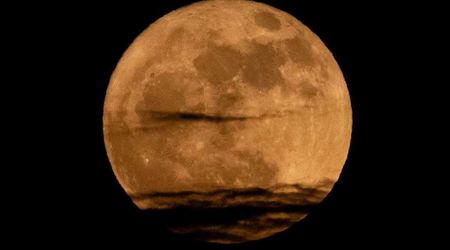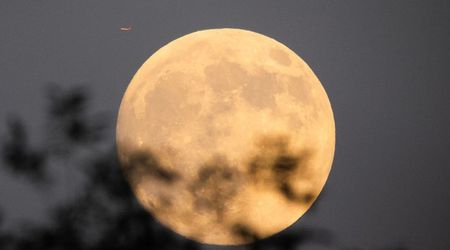Why do stars twinkle


If you look up at the stars, these bright points appear to twinkle. But what makes stars appear to twinkle in the night sky? In fact, stars do not actually twinkle; they only look like it when seen from the surface of Earth due to the effects of our atmosphere.
And if the stars twinkle, why don’t planets twinkle as well?
What Causes Stars to Twinkle?
While some stars physically change in brightness in time, they generally do so on long timescales. Amateur astronomers typically monitor these changes over hours but more often over days, weeks, or even years. Such variable stars are well studied and signal complex physical transformations happening to the stars in question.
On the other hand, the more rapid changes of scintillation come about long after the light leaves the star. So, the light waves traveling through our atmosphere diffract as they pass through air pockets at different temperatures. As the light waves come from a single point, the effect can make a star's position or brightness appear to change.
Our atmosphere reaches around 10,000 km / 6,214 mi up from the Earth's surface. The air gets blown around within the atmosphere, with hot air rising and mixing with cooler air. When there is an imbalance (agitation) in the atmosphere, the start's light will deflect in several directions. So, the stars appear to twinkle due to the light from those stars passing through our atmosphere, which is bent and distorted by varying densities and air temperatures.
There is even a scientific term for this twinkling: atmospheric scintillation. Moreover, this astronomical term refers to quick changes in a star's apparent brightness or even the star's color produced by atmospheric irregularities.
For some, the concept of the twinkling star is rather romantic, conjuring up memories of one of the most well-known nursery rhymes of all time. Yet, for astronomers, the effect can be a nuisance as it can cause the image seen through a telescope to jump or shake around. Similar effects can be seen in how our view of an item may be distorted by heat rising from a roaring fire or a hot radiator.
Other Factors That Can Affect the Twinkling of Stars
Stars are incredibly far from us. Aside from the sun, the nearest star to Earth is 4.7 light-years away or 42 trillion kilometers / 26 trillion miles. The distance between the Earth and the stars is why they are such minor, concentrated points of light. In fact, stars are so distant that they seem like points of light in the night sky, even through a telescope. Because the light is coming from a single point, its patch is highly susceptible to atmospheric interference.
But you may wonder why Venus twinkles less than a nearby bright star on the horizon. Since Venus is much closer to the Earth than a star, its light looks more like a tiny disk than a point. A larger object with more rays of light arriving at your eye averages out the position and brightness variations. That means they will appear less distorted than a star, a single ray of light being refracted by the air.
Another factor that can affect the twinkling of a star is localized atmospheric disturbances, which can be created as heat dissipates from warm areas of the ground. Suppose you are looking at the sky in the direction of an asphalt parking lot or a concrete building. This may cause stars in that direction to twinkle more, while the stars in other parts of the sky may appear more stable.
Ultimately, as the amount of scintillation depends significantly on what the atmosphere is doing at any particular time, temperature, humidity, wind speed, or factors from day to day can affect how much stars twinkle on different nights.
Additionally, starlight captured by the Kepler space telescope has concluded that the amount of a star flickers is closely tied to its size, offering a better way to measure a wide variety of stars and their associated planets.

But, Planets Are Not Twinkling… Why?
As mentioned before, stars appear as pinpoints of light in the night sky. Unlike stars, planets do not twinkle. So, their sizes are generally more prominent than the pockets of air that would warp their light, the diffractions cancel out, and the scintillation effects are negligible. The much closer planets appear as a tiny desk (a distinction more easily discerned with a telescope than with the naked eye).
The planets' more prominent yet less concentrated light must still go through our atmosphere before it is visible to our eyes. Because this less concentrated beam of light goes through the atmosphere and is refracted, it is visually less affected. Despite the refraction, there is enough light reaching our eyes from the light that the planets do not twinkle.

Scientific Implications
According to a study, some stars' increasing and decreasing brightness can hold valuable clues to their host galaxy's age. As stars begin to pulsate near the end of their lifetime, this can provide significant insight into a galaxy's lifetime. Astronomers have measured the pulses of thousands of stars in the elliptical galaxy Messier 87 and used that data to determine that it is about 10 billion years old (a number that matches with previous estimates found using other measurement techniques).
The astronomers have analyzed images of Messier 87 taken by the Hubble Space Telescope in 2006, noticing that the combined illumination of all the stars in the galaxy (located some 53 million light-years from Earth) altered every 270 days due to the decreasing and increasing brightness of every star. By observing these 270-day occurrences, the astronomers determined that they could use this metric to determine the galaxy's age. Moreover, it can be applied to other galaxies.
As a bottom line, the twinkling stars can be credited to our planet's atmosphere and the physics of light. So next time you observe the stars, their twinkle might be even more noticeable now that you know the cause.
